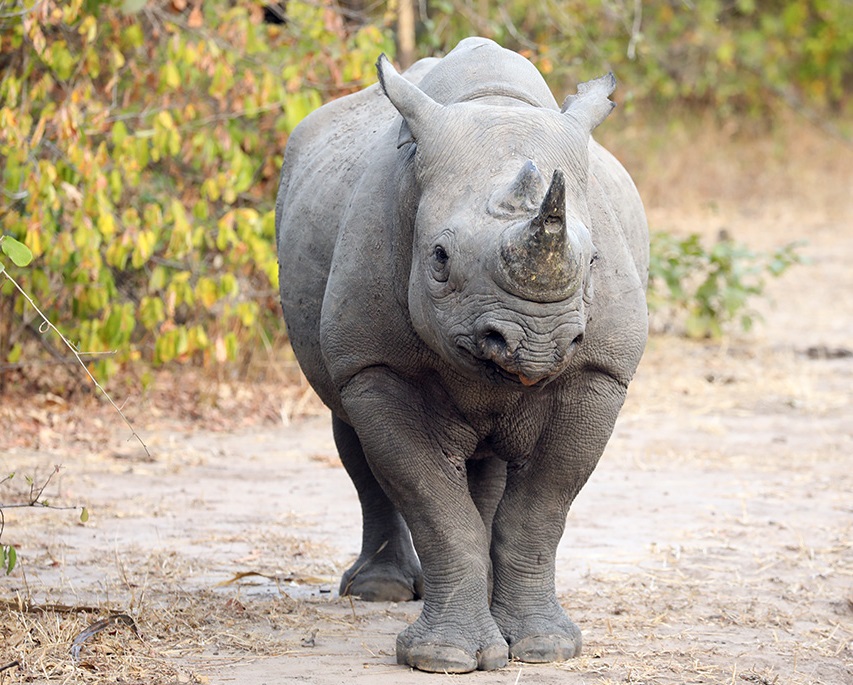Discovering the Liwonde Rhino Sanctuary: A Wildlife Haven
Unveiling the beauty and significance of the Liwonde Rhino Sanctuary, where endangered rhinos thrive in their natural habitat.
Amidst the vast splendor of Africa lies a sanctuary so profound, it echoes with the footsteps of giants. The Liwonde Rhino Sanctuary, cradled in the heart of Liwonde National Park, stands as a beacon of hope and conservation, housing one of nature’s most majestic creatures: the rhinoceros. Here, endangered rhinos roam freely, offering visitors not just a glimpse of their grandeur but also a vital understanding of the importance of preserving these incredible beings for future generations.
The Genesis of the Liwonde Rhino Sanctuary
Established in 1963 as a dedicated safe haven for rhinos, the Liwonde Rhino Sanctuary is a fortified area within the larger Liwonde National Park. It was set up in response to the critical situation facing rhinos worldwide, with poaching and habitat loss pushing these animals toward extinction. Begins with just two rhinos,the sanctuary has grown and flourished over the years due to a dedicated conservation efforts. Today, the sanctuary is home to approximately 12 black rhinos, making it a vital sanctuary for the critically endangered species. The sanctuary provides a secure environment for rhinos to roam, breed, and thrive under the vigilant protection of rangers and conservationists.

The Liwonde Rhino Sanctuary plays a crucial role in the conservation of endangered rhinos and highlights the significance of dedicated efforts to protect these majestic creatures. As one of the key hotspots for wildlife in Malawi, the sanctuary serves as a safe haven for rhinos, which have faced significant threats from poaching and habitat loss. The sanctuary is not just a protective enclosure; it embodies the broader commitment to preserving biodiversity and maintaining ecological balance. With a carefully managed habitat that balances the needs of various wildlife species, the sanctuary underscores the importance of creating environments where endangered species can thrive and contribute to the overall health of the ecosystem.
In addition to its conservation objectives, the Liwonde Rhino Sanctuary actively engages local communities through various awareness programs and initiatives. Understanding the interconnectedness between communities and wildlife is crucial for fostering stewardship of the environment. The sanctuary’s educational outreach provides resources and knowledge about the ecological significance of rhinos and the biodiversity within the region. By involving communities in conservation efforts, the sanctuary encourages a collective responsibility towards wildlife protection, making these programs not just beneficial for rhinos but also enhancing the livelihoods of local populations through sustainable practices and eco-tourism initiatives.
A Safe Haven for Rhinos
The sanctuary is home to both black and white rhinoceros, two species that have been the focus of intense conservation efforts. Through meticulous management and protection, the sanctuary not only ensures the safety of rhinos but also supports a diverse ecosystem. This includes various species of mammals, birds, and reptiles, making it a biodiversity hotspot.
Anti-Poaching Measures
One of the reasons behind the sanctuary’s success is its robust anti-poaching measures. The area is closely monitored with the help of aerial surveillance, foot patrols, and advanced technology. These efforts have significantly reduced the threat of poaching, making the sanctuary a fortress for rhino conservation.
The Role of Community Engagement
A unique aspect of Liwonde Rhino Sanctuary is its approach to involving local communities in conservation efforts. The sanctuary believes in the power of education and collaboration, offering programs that educate locals about the importance of wildlife conservation. By fostering a sense of ownership and pride among the local population, the sanctuary has created a strong ally in the fight against poaching and habitat destruction.
Eco-Tourism and Its Impact
Liwonde Rhino Sanctuary is not just a conservation area; it’s also a prime example of sustainable eco-tourism. Visitors to the sanctuary can engage in various activities, such as guided safari walks, rhino tracking, and bird watching. These experiences not only offer a unique chance to witness Africa’s wildlife up close but also contribute to the sanctuary’s conservation efforts. The funds generated from tourism help support the sanctuary’s various projects, including anti-poaching patrols and community education programs.
Research and Rehabilitation
The sanctuary also plays a critical role in the research and rehabilitation of rhinos. In collaboration with various international conservation organizations, Liwonde Rhino Sanctuary participates in studies that aim to understand the behavior, genetics, and health of rhinos. This valuable research contributes to global efforts to conserve these magnificent animals. Furthermore, the sanctuary serves as a rehabilitation center for injured or orphaned rhinos, providing them with the care they need to eventually reintegrate into the wild.
The Challenges Ahead
Despite the sanctuary’s success, challenges remain. The threat of poaching, while significantly reduced, still exists. Additionally, habitat encroachment and climate change pose long-term threats to the sanctuary’s inhabitants. Continuous efforts and support are needed to ensure that the sanctuary can maintain its role as a safe haven for rhinos and other wildlife.
Experiencing the Liwonde Rhino Sanctuary: Wildlife Encounters and Guided Safaris
Visitors to the Liwonde Rhino Sanctuary can look forward to an intimate and educational wildlife experience. Guided safaris, led by expert rangers with deep knowledge of the park’s flora and fauna, provide an opportunity to witness the rhinos in their natural habitat. These safaris are conducted with the utmost respect for the animals and their environment, ensuring that the impact on the rhinos and the broader ecosystem is minimal.
A safari in the sanctuary is not just about the rhinos. The park is also home to a plethora of other wildlife, including elephants, hippos, crocodiles, and a diverse array of bird species. The Shire River, Malawi’s largest river, provides a lifeline for the park’s inhabitants and serves as the backdrop for boat safaris—a serene way to encounter the park’s aquatic and riverside wildlife.
The Sanctuary’s Role in the Greater Ecosystem
The Liwonde Rhino Sanctuary is a keystone in the larger conservation landscape of Malawi and Southern Africa. It contributes to the ecological balance of Liwonde National Park by maintaining a healthy rhino population, which in turn influences the dynamics of other species within the park.
The sanctuary’s approach to conservation goes beyond the protection of individual species. It also involves habitat restoration and management, ensuring that the complex web of life within the park is sustained. This holistic perspective on conservation ensures that the sanctuary’s impact is felt across the entire ecosystem.
